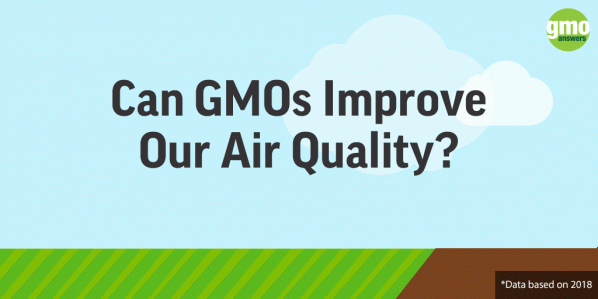Question
Are GMOs increasing the price of food?
Are GMOs increasing the price of food? -- Submitted as part of GMO Answers Top Consumer Questions Survey --
Submitted by: Community Manager
Answer
Expert response from Graham Brookes
Agricultural Economist, PG Economics Ltd, UK
Tuesday, 08/04/2014 13:22
The simple answer to this question is no. Actually, GMOs have contributed to reducing the real cost of food.
The main reason why biotech (GM) crops have contributed to reducing the cost of food stems from the nature of the technology adopted. The technology adopted to date has largely been productivity-enhancing and cost-reducing technology. This means additional global production has arisen from use of the technology, equal to an extra 122 million tonnes of soybeans, 237 million tonnes of corn, 18 million tonnes of cotton lint and 6.6 million tonnes of canola in the period 1996–2012. At the same time, the cost of producing these crops using this technology has typically been lower than the cost of producing the same crops using conventional technology, because of savings to the amount spent on inputs such as pesticides and fuel. These savings have usually more than offset the additional cost farmers have incurred for buying GM seeds, so that, when added to the extra income arising from higher yields, the net farm income benefit from using GM technology has been equal to $116.6 billion (1996–2012).
Assessing the precise impact of these GM agronomic, cost-saving technologies—such as herbicide tolerance and insect resistance—on the prices of soybeans, maize, cotton and canola (and derivatives) is difficult. Current and past prices reflect a multitude of factors, of which the introduction and adoption of new, cost-saving technologies is one. This means that estimating the effect of different variables on prices is far from easy.
In general terms, it is important to recognize that the real price of food and feed products has fallen consistently during the last 50 years. This has come about not “out of the blue” but from enormous improvements in productivity by producers. These productivity improvements have arisen from the adoption of new technologies and techniques.
In addition, if we look at the extent of use of GM crop adoption globally, this identifies that:
- For soybeans and cotton, the majority of both global production and trade is accounted for by biotech production.
- For maize and canola, while the majority of global production is still conventional, the majority of globally traded produce contains materials derived from biotech production.
This means that for crops such as soybeans and cotton, biotech production now effectively influences and sets the baseline price for commodity-traded soybeans and derivatives on a global basis. Given that biotech soybean varieties have provided significant cost savings and farm income gains (e.g., $4.8 billion in 2012) to growers, it is likely that some of the benefits of the cost saving will have been passed on down the supply chain in the form of lower real prices for commodity-traded soybeans and cotton. For example, the current baseline price for all soybeans, including conventional soy, is probably at a lower real level than it would otherwise (in the absence of adoption of the technology) have been. A similar process of “transfer” of some of the farm income benefits of using biotechnology in the other three crops has probably also occurred, although to a lesser extent because of the lower biotech penetration of global production and trade in these crops.
Some economic analysis has been undertaken to estimate the impact of biotechnology on global prices of soybeans. Moschini et al. (2000) estimated that by 2000, the influence of biotech soybean technology on world prices of soybeans had been between -0.5 percent and -1 percent, and that as adoption levels increased, this could increase up to -6 percent (if all global production were biotech). Qaim & Traxler (2002) estimated the impact of GM herbicide-tolerant soybean technology adoption on global soybean prices to have been -1.9 percent by 2001. This benefit will have dissipated through the post–farm gate supply chain, with some of the gains having been passed on to consumers in the form of lower real prices.
Brookes et al. (2010) quantified the impact of biotech traits on production, usage, trade and prices in the corn, soybean and canola sectors. This analysis of the potential impact of no longer using biotech traits in world agriculture shows that the world prices of these commodities, their key derivatives and related cereal and oilseed crops would be significantly affected. World prices of corn, soybeans and canola would probably be respectively +5.8 percent, +9.6 percent and +3.8 percent higher than current levels. Prices of key derivatives of soybeans (meal and oil) would also be between +5 percent (oil) and +9 percent (meal) higher than current levels, with rapeseed meal and oil prices being about 4 percent higher than current levels. World prices of related cereals and oilseeds would also be expected to rise by +3 percent to +4 percent.
Graham Brookes is an agricultural economist with PG Economics Ltd., U.K., which specialises in examining the economic and environmental impact of new technology use in agriculture. Graham has authored 17 papers published in peer-reviewed scientific and economic journals on the economic and environmental impact of GM crops around the world. See, for example, ‘Economic impact of GM crops: the global income and production effects 1996-2012’, GM Crops and Food, Biotechnology in Agriculture and the Food Chain, 5.11, 1-11. Available on open access at www.landesbioscience.com
Also see Brookes G et al (2010) The production and price impact of biotech crops, Agbioforum 13 (1) 2010. www.agbioforum.org
Other references cited above are:
- Moschini G, Lapan H & Sobolevsky A (2000) Roundup ready soybeans and welfare effects in the soybean complex, Iowa State University, Agribusiness vol 16: 33-55
- Qaim M & Traxler G (2005) Roundup Ready soybeans in Argentina: farm level & aggregate welfare effects, Agricultural Economics 32 (1) 73-86.
How Do GMOs Benefit The Environment?



